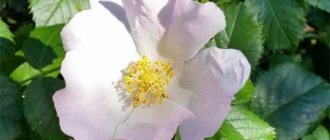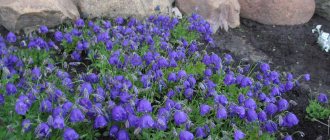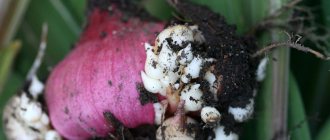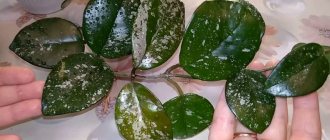Our distant ancestors also learned to grow ivy at home. This evergreen plant belongs to the Ampelaceae family, which has fascinatingly beautiful hanging vines. The flower is distinguished by thick, lush foliage, which gives a decorative appearance to the garden plot, an elite winter garden, creating coziness and aesthetics in the living room. It is readily chosen by dacha owners because the plant is unpretentious, care does not take much time, and it develops well on its own.
Description of the plant
Indoor ivy (Hedera) is a creeping, evergreen, perennial plant of the Northern Hemisphere from the Araliaceae family. The name Hedera was assigned to the plant in Ancient Rome and was transferred without change by Carl Linnaeus to botanical dictionaries.
In nature, there are about 15 varieties of domestic ivy, almost all of them are cultivated and used in temperate and subtropical countries as garden and indoor plants.
The shape and color of the foliage depend not only on the species, but also on the properties of the branches. So, on one shrub “flowering” and “non-flowering” branches sprout. Flowering branches have leaves in the shape of elongated ovals of pale green color. But those that do not bloom are covered with dark green spatulate leaves.
Outdoor ivy blooms profusely with small flowers collected in clusters. After flowering, a fruit is formed in the form of a small black berry, which contains seeds. Flowering is not typical for indoor ivy.
House ivy has been used in everyday life since ancient times. The ancient Greeks, and later the Romans, associated this plant with the god Bacchus, so they made wreaths and decorations from ivy, calling for love and fun.
Ivy was also used as a medicinal plant in folk medicine. It is believed that tinctures and decoctions from this plant have anti-inflammatory and antibacterial effects. They help with diseases of the genitourinary system, as well as with various types of respiratory diseases.
Science does not confirm these properties of ivy, but studies have shown that the plant is capable of absorbing carbon dioxide, toxins and exhaust in large volumes.
What types of ivies are there?
Ivy is a genus of plants in the Araliaceae family, order Umbelliferae.
There are just over one and a half dozen species of ivy in the world. Some of them are rare Red Book species or endemics that you cannot buy in a store, others are not suitable for our climate (for example, they grow only in hot subtropics or require constant high air humidity), while others have taken root quite well in average Russian gardens.
All ivies are perennial creeping shrub vines that “move” by clinging with their adventitious roots to walls, tree trunks, etc. Contrary to popular belief, ivy does not destroy its support by “drilling its roots into it,” but only clings to it with special suction cups , looking for all the cracks and irregularities.
It has been proven that a dense canopy of ivy, on the contrary, can protect walls and masonry, acting as a shield from sudden changes in temperature and pollution.
Ivy leaves are usually green, on long petioles, often dense, leathery, shiny, and come in two types (depending on whether they grow on a sterile or fruit-bearing shoot) - angular-lobed and whole, ovoid or heart-shaped. Depending on the type and variety of ivy, the leaves can be of different lengths and widths, as well as vary in the shape and size of the blades.
Greenish flowers, although not single, but collected in inflorescences-corymbs or racemes, are usually very inconspicuous and inconspicuous, and small fruits and berries can be black or yellow. Ivy is pollinated by insects and is an excellent honey plant. It is interesting that some ivy, unlike most crops, can bloom not only in spring, but also in autumn, and the berries will then ripen in January-February or next spring - however, in our conditions, garden ivy may not bloom at all.
Leaves, shoots and fruits of all types of ivy are slightly poisonous (contain saponin).
In the horticultural culture of our regions of the central zone, the most common varieties and varieties of common ivy are sometimes grown : Pastukhov , Caucasian and Colchis . In indoor culture, when certain conditions are created, or in more southern regions in open ground, more heat-loving types of ivy can be grown - for example, Canary or Irish .
Types, varieties with photos
Canary house ivy / Hedera Canariensis
Mature ivies of this species have bright red stems. The leaves grow up to ten centimeters in length. The foliage color is green, framed by a white border along the edge of the leaf blade.
Common Ivy / English Ivy / Hedera helix
One of the most popular types of home ivy. Used as an ampel plant, or for vertical gardening on supports.
In outdoor conditions it blooms and produces inedible dark lilac berries. The color and shape of the foliage depend on the variety.
Varieties:
- Ivalace;
- Eve;
- Sagittaefolia;
- Harald.
Colchian ivy / Hedera Colchica
This species is characterized by large (25 centimeters) foliage with an unusual texture. The outer part of the leaf plate is perfectly smooth, and the inner part is velvety. Varietal ivies of this species present a varied color palette of foliage and its shape.
Varieties:
- Dentata Variegata;
- Arborescens;
- Sulfur Heart.
Ivy Fatshedera Lise / Hedera Fatshedera
Variegated ivy, the leaves of which combine bright green and white spots spread over the surface of the outer and inner sides of the leaf blade.
Popular types of ivy
Common ivy or Hedera, which means hanging plant, belongs to the Heder class. The homeland of lianas is the subtropics of the African continent. To make it easier for the plant to hold luxurious foliage, it easily entwines any support and is firmly held on it. This ability is used for decorative purposes, creating supports in different configurations or braiding a vine onto the walls of a building, fences, or gazebos.
If you control the development of ivy and provide appropriate care, it will help create an original, stylish interior. The main, commonly found types of ivy:
- the common loach quickly clings to everything that is nearby;
- the Lise variety is popular among gardeners due to the bright, unusual color of its large palmate leaves;
- Canary ivy is distinguished by variegated leaves of a dense structure.
Home care
Lighting
The plant prefers to grow in partial shade or diffused light. Direct sunlight adversely affects the color of foliage and can cause blotchy burns.
Temperature
Ivy prefers average temperatures in the range of 15-25 degrees Celsius. The plant loves fresh, warm air and tolerates ventilation with a slight draft.
Watering and humidity
Water home ivy with settled water at room temperature. The frequency of watering depends on the air temperature and the rate of drying of the top soil layer in the pot. The plant does not like overflow.
Ivy's lush foliage collects dust and toxins, so it needs to be wiped down with a damp sponge or washed completely in the shower every couple of weeks. Loves home ivy and spraying from a spray bottle.
Priming
Any universal slightly acidic earth mixture is suitable for growing ivy. Additionally, a small amount of peat and river sand can be mixed into the soil. A mandatory requirement for ivy is a good drainage layer. The container for ivy roots should be deep and high, but not wide.
Fertilizers
To feed home ivy, use universal liquid mixtures for deciduous plants. In the warm season, fertilizers are applied intensively once every two weeks. In winter, one feeding per month is enough.
Transfer
The frequency of transplants depends on the age of the plant and, accordingly, the intensity of development of its root system. Ivy trees aged from 1 to 5 years require an increase in “living space” every year.
More mature plants are replanted “on demand” when the roots begin to emerge through the drainage slits.
The roots of ivy, which has celebrated its tenth anniversary, practically stop growing, so there is no need to replant the plant; it is enough to simply update the top layer of the substrate once a year.
The transplantation procedure is carried out using the transshipment method so as not to damage the roots of the plant.
Trimming
The stems of house ivy grow very quickly. To preserve its decorative forms, the plant must be regularly pruned, thinned and pinched. Trimmings can be used to propagate and rejuvenate ivy.
After the pruning procedure, the sections must be treated with crushed charcoal.
How to grow ivy and how to care for it
Common ivy is an unpretentious perennial plant that grows on all types of soils, is drought-resistant and light-loving, and tolerates frost well. Although it can grow in deep shade, tolerating heavy shade, it grows faster when exposed to direct morning or evening sun.
An important condition for growing this ivy is the presence of diffused sunlight. The plant needs it to form rich leaf colors. Varieties of common ivy with variegated two-color leaves require good lighting.
With a lack of light, the variegated color of the leaves fades and even disappears, but they should be protected from direct sunlight. Almost any soil is suitable for common ivy, with the exception of clay. It grows well in fertile and sandy soil; a clay mixture is best.
Irish ivy is more frost-resistant than common ivy, but suffers from frost. It tolerates partial to full shade, but can burn in full sun. Grows on all soils except pure peat.
Garden ivy is unpretentious and can grow in the shade and in lighted areas. Absolutely any soil is suitable for it, even poor soil, but rich in nutrients has a better effect on the appearance of the plant. Ivy can be planted in a permanent place starting at the end of March, if weather conditions permit. The most optimal time for planting is mid or late May.
When caring for ivy in the garden when growing a hedge, supports are prepared in advance. These could be poles with wire stretched across them, or a wooden fence, or a metal or plastic mesh.
Light-loving plants can be recognized by the color of their foliage. They typically have light green and variegated leaves and grow best in strong light.
To plant ivy, dig holes along the supports so deep that the roots of the seedling can completely fit into them. Planting holes are dug at a distance of approximately 50 cm from each other.
The soil at the site where the fence is created is prepared in the fall by digging deeply and adding organic fertilizers - humus, rotted manure or compost. In spring the soil is loosened. Planting holes are filled with a soil mixture consisting of turf soil, humus, peat and sand in a ratio of 2:1:1:1.
The bush is planted obliquely so that, once rooted, the plant can climb onto the necessary supports or stones. At least 25 rooted cuttings are planted for each m2. After planting, the seedlings must be watered.
The growing shoots are directed to a support that is supposed to be landscaped. After planting ivy, if properly cared for over the summer, it will spread over the supports like a dense wall and become a reliable protection from wind and dust.
Planting Irish ivy begins with the acquisition of acclimatized seedlings in a plastic container with fertilizers. In this case, the plant does not suffer from digging up with inevitable damage to the root system and therefore takes root well after planting.
Ivy seedlings with a closed root system are planted from March to November, including on hot summer days, without purchasing additional fertilizers.
Watering ivy during care when growing in the garden is necessary within reasonable limits so that the plant has enough moisture and the soil does not dry out. The soil should be moist, but should not be over-watered.
In hot, dry weather, at temperatures above +21 ° C, it is recommended to spray the ivy leaves from above, which will allow them to maintain freshness and purity. In addition, regular spraying with water will protect the plant from red spider mites.
Pruning of fast-growing ivy is carried out regularly, removing excess shoots, dry and damaged. Systematic pruning and shortening of unevenly growing shoots allows you to keep ivy within the established contour of the fence.
These photos show techniques for caring for ivy in outdoor conditions:
To protect garden ivy in winter, the soil under it is mulched in the fall with a sufficient layer of peat or humus so that it does not freeze. Ivy stems on low borders are covered for the winter with dry leaves of apple, hazel or oak.
However, the shelter should not be very warm, as this can lead to damping off of the plants. In early spring, when removing autumn leaves, do not use a rake, as they damage young shoots.
Ivies are rarely affected by insect pests or diseases. However, common ivy can sometimes be affected by spider mites.
Irish ivy is damaged by scale insects and mites. For prophylaxis when caring for ivy, plants are regularly, but within reasonable limits, sprayed with an insecticide in the dose indicated on the package.
Treatment with karbofos, Aktara, and Aktellik (1-2 ml per 1 liter of water) gives good results against scale insects, spider mites, and aphids.
If the ivy is infested with spider mites, then silvery dots will appear on the front side of the leaves, and spider threads will appear below. In this case, they are sprayed with water and treated with a special preparation against pests.
Propagation of indoor ivy
Cuttings
After pruning the ivy, a lot of material remains that can be used as cuttings for propagation.
For planting, stems 10-15 centimeters long with leaves are suitable. The cuttings are placed in water until the first roots appear. The petioles with roots are placed in a container with damp sand and covered with film. After a couple of months, the cuttings will take root well and can be planted in separate pots.
By shoots
If long and massive shoots were removed during pruning, they can be carefully cut with a blade into several separate parts. These vines are also first placed in water and, after the first signs of roots appear, in damp sand. After 2 months they are planted in good soil, in a personal container.
By layering
Containers with a damp mixture of soil and peat are placed next to the pot with the mother plant. Conveniently located stems are bent from the main ivy and secured in the center of the container with the peat mixture. The place where the stem comes into contact with the ground is sprinkled with earth, watered abundantly and covered with film. After the cuttings have taken root, they can be separated and planted in a separate pot.
Ivy damages facades
Yes and no. This plant, of course, has strong adventitious roots that cling to the smallest cracks, but it does not crumble the facade on its own. The roots take advantage of existing cracks, and perhaps this and the weight of the lashes can cause further damage to the structure. But ivy can have a positive effect on the facade, making up its natural insulation. As a result, the walls heat up less in summer and are better protected from frost in winter. The theory that green climber traps moisture in walls is also a myth because the dense cover of leaves protects the wall from rain. Of course, it is difficult to completely remove ivy from the wall, because the plant’s knotted roots adhere tightly to the facade and even after removal, the remains of torn fragments are visible.
Insulation and shading of buildings
Climbers covering the walls of houses contribute to increasing the comfort of life, as they have insulating properties. In summer, they limit the heating of the building's façade, directly stopping solar radiation. In addition, on warm days, dense leaves cool the air against the wall. The temperature difference above and below the leaves reaches 3-4˚C, and the amplitude fluctuates throughout the day. The temperature under the foliage can be even higher than outside, especially in the evening and night hours. The phenomenon is closely related to the process of transpiration, the intensity of which decreases with decreasing ambient temperature. It is also a cooling evaporation noticeable in summer, while it is minimal in winter.
In our climatic conditions, of all the vines, only ivy retains its leaves in winter, significantly reducing heat loss. The thermal conductivity coefficient depends on the type of wall, but covering it with greenery reduces it from 3 to 18%. This is mainly influenced by the sheets, the tightness of which is about 80%. However, with age, the stems and adventitious roots of ivy can cover the wall by 50%, which increases the thickness of the insulating layer. In total, these conditions allow you to save 15-30% of energy.
Dampness of walls
Ivy, like other climbers, lowers the relative humidity of the air in the boundary layer. This effect is most noticeable during prolonged rains, when the humidity above the leaf layer is 100% and below does not exceed 90%. A dense layer of leaves protects the wall from direct wetness. In this way, the climber reduces the negative effects of acid rain on the plaster.
It’s bad if there is no eaves on the house, in which case rainwater flows directly under the layer of leaves, where there is minimal access to sunlight and wind, which is why the moisture does not dry out for a long time. Also in the case of walls that are poorly insulated from the ground, a layer of leaves limits their drying. However, the drying role of the vine cannot be excluded. Its roots absorb water in the immediate vicinity of the foundation, contributing to its dryness. At the same time, there is no need to worry about thick skeletal roots, since a plant resting on a support only produces small roots.
Concerns about excessive dampness of walls due to climber crops are also due to the fact that water accumulates where adherent roots and shoots come into contact with the wall. The ivy forms a very dense layer directly adjacent to the wall. However, in practice it turns out that it is extremely dry underneath, since the coating is dense and resistant to rain penetration.
Chemical effect of ivy on facades
It's small. Adventitious roots emit a certain amount of carbon dioxide, but it is active for a very short time, like the adherent roots themselves, the epidermis of which quickly becomes covered with plugs. Mechanical penetration of ivy adventitious roots on properly constructed buildings is small. However, in the case of old crumbling bricks or crumbling mortar, they may fill cracks and cavities, but never make holes themselves. Occasionally, ivy, like other climbing plants, tears off tiles. Cases of the entire vine slipping and the plaster sliding down most often concern the Virginia variety. However, such a risk cannot be excluded, especially on damaged plasters with a large mass of plants and in climates with strong winds.
Diseases, problems, pests and treatment
Indoor ivy is a disease-resistant and unpretentious plant. However, neglecting the rules of care can lead to loss of decorative appearance - fading of the color of the foliage, its yellowing and falling off; lack of variegated color. Most of these problems are the result of excessive watering or abuse of fertilizers.
Pests rarely target indoor ivy, but gardeners may encounter thrips, aphids, scale insects or spider mites. Ivy will easily tolerate treatment with insecticides, as well as soap solution or garlic tincture. Therefore, ridding the plant of parasites will not be difficult.
Does ivy harm trees?
Yes and no. Another myth is that the roots of the green vine damage trees or suck the sap out of them. Ivy is not a parasitic plant. He uses wood as buildings or walls, i.e. as a support. Adventitious roots serve only to anchor the climbing plant and do not absorb water or other compounds. Ivy growing on a tree trunk does not twine around it like the choke or vine that forms this type of stem, but rises where it is directed along grooves in the bark. The only problem may be the weight of the vine, which, when climbing young seedlings or trees with fragile wood, can damage them by breaking branches.
Planting and replanting hedera
If you notice that the plant has stopped growing and developing, or roots have begun to crawl out of the drain hole in the pot, then it is time to replant. However, you don’t have to expect the indicated signs, but simply replace the top layer of soil with fresh one (in adult plants), replant young ivy every year, and older hedera once every two years. It is recommended to use the following soil composition: sand, peat, turf, leaf and humus soil in equal proportions. Plants must be replanted in the spring after the end of the dormant period (March-April). The container should be 2-3 cm larger in diameter than the previous pot. Before replanting, the heder should be watered generously and a layer of drainage should be placed at the bottom of the flowerpot. The transplanted plant needs to be watered and sprayed, and then placed in a permanent place
Fertilizer and feeding
Ivy is a house flower that needs proper care. In indoor conditions it is difficult to provide nutritious soil, so it is better to use complex mineral fertilizer, preferably in the spring.
Hedera helix - what an ivy plant looks like
An excess of substances can harm the plant. Therefore, you need to use any fertilizers sparingly. You can find a special product for ivy in a pot. It is suitable for all decorative foliage plants.
Important! It is better to fertilize from spring to autumn. The fertilizer must be diluted in accordance with the instructions.
Ivy flowers only please rare owners, and you should not try to force their appearance, as they are not particularly attractive. Changes in the header layout may signal problems. For example, leaves begin to dry out when there is a lack of moisture.
An ivy houseplant can be a good gift instead of cut bouquets. To do this, it is enough to pack the pot beautifully and hand it to the person. In warm regions it is used in the garden instead of grass. Heder beautifully weaves around hedges and walls.
Manual ivy removal
This method is best suited for small areas covered with vine shoots. If the ivy has spread widely across an area, removing it by hand will take a long time, so in such cases it is best to consider sun deprivation or chemical treatments.
If you plan to remove the plant by hand, it is advisable to wear protective gloves. This precaution will help prevent the formation of damage and calluses on your hands. Ivy is a common skin allergen that can cause itching or a contact rash. Gloves will prevent an unexpected allergic reaction during pruning.
Step by step execution:
1. The vines bearing shoots are torn off from the wall or tree. Particularly thick plants should have their leaves and stems trimmed back to make the roots more accessible. Cutting is done using garden pruners. After removing the above-ground part, you can work on the roots in the soil.
2. Pieces of chopped ivy should be collected in a bag for subsequent disposal. The lost fragments will germinate and take root after some time, forming a new plant.
3. It is better to avoid working on a windy day. The wind may blow the cut leaf or stem to another location where it will germinate.
4. It is not recommended to use a hoe to loosen the soil or cut the top layer of a plant. This could further expand the spread of ivy.
5. Completely remove the roots from the ground. On loose and clayey soils they are easily pulled out. However, in some cases the root system clings firmly to the substrate. The bush needs to be dug up from all sides, perhaps lifted with a garden fork, and only then with force, but smoothly, pull the roots up.
6. After removing the bush manually, you need to check the ground. If you leave pieces of the roots, the ivy may grow back in a few weeks.
7. Get rid of all cuttings of stems, leaves and roots. Avoid throwing them into open compost piles where the wind could blow seeds or leaves back into the area.
8. Using a fine-tooth rake will help sift through the soil to find any remaining shredded ivy. Even the smallest elements can promote regrowth.
9. It is enough to take the ivy far beyond the boundaries of the site, but it is much easier to simply burn it in a garden stove or barbecue. It is prohibited to light ordinary fires within populated areas; you should not break the law, it may result in a fine.
10. Add mulch over the area where the ivy roots were previously located to prevent regrowth. A layer of wood shavings or sawdust, 15-20 cm thick, is quite suitable.
In the future, newly appearing young ivy shoots in the area are removed as they grow. Destroying the entire root system and leaves can be challenging. Therefore, the plant often germinates again and again. Every time ivy stems are noticed, they should be plucked. Over time they should stop appearing.
Keep in mind that the amount of ivy decreases with each weeding, but it may take up to a year or more for the plant to be completely removed.











